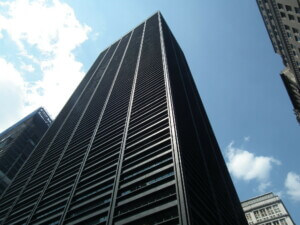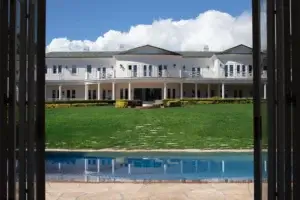Design Miami, the high-design fair that runs with the giant, Art Basel Miami Beach, exhibited two objets d’architecture over the Miami Art Week, and named an architect, David Adjaye, as its 2011 Designer of the Year. Both objets were sculptural pavilions: one is an installation by Adjaye, commissioned for the fair, and the other a restored modernist icon with a utopian agenda.
Adjaye’s pavilion Genesis was sited just outside the entrance to the Design Miami fair tent. Constructed with digitally cut timber planks, Genesis is triangular in plan, with an ovoidal interior space that opens to two sides, a smaller window on the third side, and an oculus above. Called by Adjaye “architectural furniture” because it’s not exactly a building, but almost a sculpture meant for human occupation, Genesisbecame a civic amenity for fairgoers, and gave the parking-lot site a feeling of a plaza.
The other pavilion was in a vacant lot in the Design District. Buckminster Fuller’s Fly’s Eye Dome prototype was an early experiment in inexpensive prefab shelters and environmental, off-the-grid living. The dome, one of only three ever made by Bucky, was restored by Design Miami’s founder, Craig Robins. It was joined by the Fuller’s “omni-directional transport system”, the Dymaxion 4, restored by Lord Norman Foster using his own original Dymaxion as template.
The 24 foot-wide prototype dome is a tessellation of hexagonal fiberglass panels with plastic bubble dome windows that seem to radiate from refracted light. It appears strong, but lighter than air, as if a white cloud of geometric purity is floating just along the ground. It was paired with Fuller’s Dymaxion Car as part of the traveling exhibition, “Architecting the Future: Buckminster Fuller and Norman Foster” curated by Lady Elena Foster (Long before he was knighted, Foster worked with Fuller.) The dome will be permanently installed in Miami’s Design District, in a plaza being developed by Robins. The Miami fairs have always been cross-disciplinary, beginning in the early years with the spontaneous creation of the “Miami model”: part serious fair, part social event, part bacchanalian party, part educational experience, and part clearing house for other creative media. Design Miami showed how naturally design-as-art can fit into this maelstrom. Perhaps architecture, although it has always played a cameo role during Basel week, will move in the same direction.










